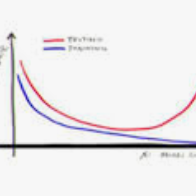During the computed tomography (CT) imaging process, metallic implants within patients often cause harmful artifacts, which adversely degrade the visual quality of reconstructed CT images and negatively affect the subsequent clinical diagnosis. For the metal artifact reduction (MAR) task, current deep learning based methods have achieved promising performance. However, most of them share two main common limitations: 1) the CT physical imaging geometry constraint is not comprehensively incorporated into deep network structures; 2) the entire framework has weak interpretability for the specific MAR task; hence, the role of each network module is difficult to be evaluated. To alleviate these issues, in the paper, we construct a novel deep unfolding dual domain network, termed InDuDoNet+, into which CT imaging process is finely embedded. Concretely, we derive a joint spatial and Radon domain reconstruction model and propose an optimization algorithm with only simple operators for solving it. By unfolding the iterative steps involved in the proposed algorithm into the corresponding network modules, we easily build the InDuDoNet+ with clear interpretability. Furthermore, we analyze the CT values among different tissues, and merge the prior observations into a prior network for our InDuDoNet+, which significantly improve its generalization performance.Comprehensive experiments on synthesized data and clinical data substantiate the superiority of the proposed methods as well as the superior generalization performance beyond the current state-of-the-art (SOTA) MAR methods. . Code is available at \url{https://github.com/hongwang01/InDuDoNet_plus}.
翻译:在计算断层成像(CT)成像过程中,病人体内的金属植入往往造成有害文物,对重建的CT图像的视觉质量有不利影响,并对随后的临床诊断有负面影响。对于金属制品减少(MAR)任务,目前深层学习方法取得了有希望的性能。然而,其中大多数方法有两大共同的局限性:1)CT物理成像几何限制没有全面纳入深层网络结构;2)整个框架对具体MAR任务的解释性不强;因此,难以评估每个网络模块的作用。为了缓解这些问题,我们在文件中建立了一个名为 DIDoDoNet+ 的新颖的深层双域域网,这个网络的成型程序是精细地嵌入了CT成的。具体地说,我们开发了一个空间和Radon区域重建联合模型,并提出了一种最优化的算法,只有简单的操作者才能解决这个问题。通过将拟议的算法的迭代步骤纳入相应的网络模块,我们很容易地将InduDoNet+ 建立具有明确的解释性能。此外,我们分析不同组织之间的CT值,并将先前的观测结果合并成一个前的网络网络,作为我们GILODNet+Misalalalalalalalalalalal化数据的基础,从而大大改进了现有的数据。





